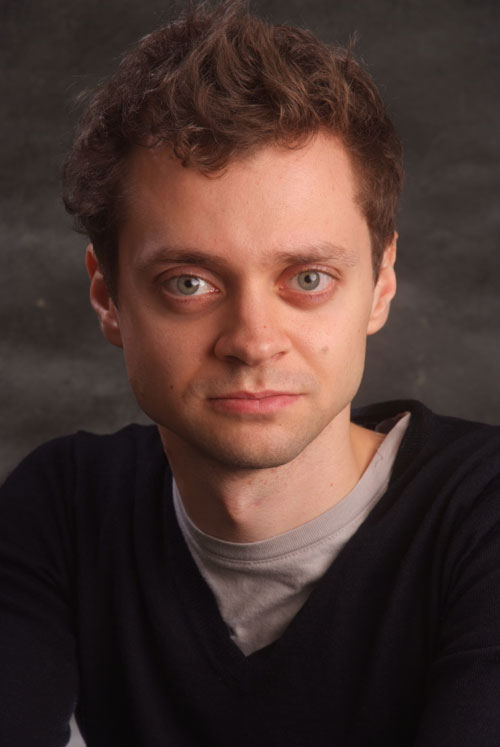Potent countertenor, elegant dancers enliven Boston Baroque’s “Orfeo ed Euridice”

Owen Willetts stars in Boston Baroque's performances of Gluck's "Orfeo ed Euridice."
Boy loses girl. Boy gets girl back. Boy loses girl again. Boy gets girl back again.
You have just read the entire plot of Gluck’s Orfeo ed Euridice. What kind of an opera plot is that? No jealous queen, no conspirators, no invading army, no slave girl switched at birth, no gods intervening.
Well, one god intervening. Still, how do you make a full evening’s entertainment out of such a simple story? Gluck’s answer: Tell it twice. Have singers sing and act it, then bring on dancers to dance it.
Or at least, that was the approach adopted Friday night in New England Conservatory’s Jordan Hall by Boston Baroque under music director Martin Pearlman and two guests, stage director David Gately and choreographer Gianni Di Marco. Taking advantage of the abundant dance music in Gluck’s score, they created a ballet that shadowed the opera, featuring Henoch Spinola as Dancer-Orfeo and Ruth Whitney as Dancer-Euridice, backed by a corps of four ballerinas, all coming onstage from time to time to comment choreographically on the opera’s plot.
The resulting production felt more like a courtly masque than an opera, divided nearly evenly between singing and dancing—this despite the fact that the score used was Gluck’s original Vienna version of 1762, before the simplicity-minded opera reformer was obliged to add extra ballet music for a later Paris production.
The Paris score became the basis for various adaptations, notably by Hector Berlioz in 1859, intended to keep Gluck’s elegant music on the contemporary opera stage. Some of the numbers composed for Paris—including that flute-recital favorite, the “Dance of the Blessed Spirits”—have become so closely associated with this opera that performances of the Vienna version remain rare.
Friday’s performance offered a look at history’s first “reform opera” as the team of Gluck and librettist Raniero Calzabigi originally conceived it, in an intimate theater where the singers were up close and the felicities of Gluck’s original scoring, played on replica instruments of the period, could be savored.
So focused on simplicity were the reformers that their Orpheus story became, at least until the third and final act, almost a monodrama for one singer with chorus. The role of Orfeo, composed for a castrato and later taken up by mezzo-sopranos, was performed on Friday night by Owen Willetts, a British countertenor who, though slight of build, was possessed of (or perhaps by) a voice that was not only handsome in quality but powerful enough to fill the hall with room to spare.
Willetts deployed his big instrument sensitively, and with consistent tone throughout his range, as he projected Orfeo’s volatile emotions. But when he chose to swell a note, listeners in the back row could feel it.
When her turn finally came to sing as Euridice in Act 3, soprano Mary Wilson proved to have a well produced and supported voice, capable of reaching dramatic heights in the rage aria Che fiero momento. Although Wilson was no match for Willetts in vocal power, the two modulated their tones to blend well in their duet, Vieni, appaga il tuo consorte.
As the god Amor (Cupid), the only other solo role in the opera, soprano Courtney Huffman brought a bright, silvery vocal tone to an interpretation that set her character apart from the mortals onstage, with their dark-hued clothes and rather formal acting style. Playing a supposedly male character yet dressed like a club gal in hot yellow jacket and leopard-print top, Huffman swaggered around the stage and poked Orfeo in the ribs with a hey-I’ll-get-your-girl-back bonhomie. When you’re a god, the message seemed to be, you can act and dress any way you want.
As companion, foil, and antagonist to Orfeo, the chorus is a major character in this opera—many characters actually, including the nymphs, shepherds, monsters, furies, heroes and heroines Orfeo encounters in his wanderings. Rich-toned, well blended and expressive, Friday’s chorus of 20 singers sounded like many more.
The opera’s other “chorus,” the choreographic one, offered a nicely varied menu of dances, making resourceful use of the small strip of stage they were allotted in front of the orchestra.
As singers and dancers alternated onstage, the constant element throughout was the orchestra, seated upstage and making its presence gently felt through Gluck’s melodious score. Conductor Pearlman brought the period instruments together in a flexible blend of orchestral sound, capable of the finest shadings of tone and phrasing. Diane Heffner on the clarinet-like chalumeau and Barbara Poeschl-Edrich on the Baroque triple harp had subtle but memorable moments as the orchestral alter egos of Orfeo’s voice and lyre.
Orfeo ed Euridice will be repeated 8 p.m. Saturday. bostonbaroque.org; 617-987-8600.
Posted in Performances